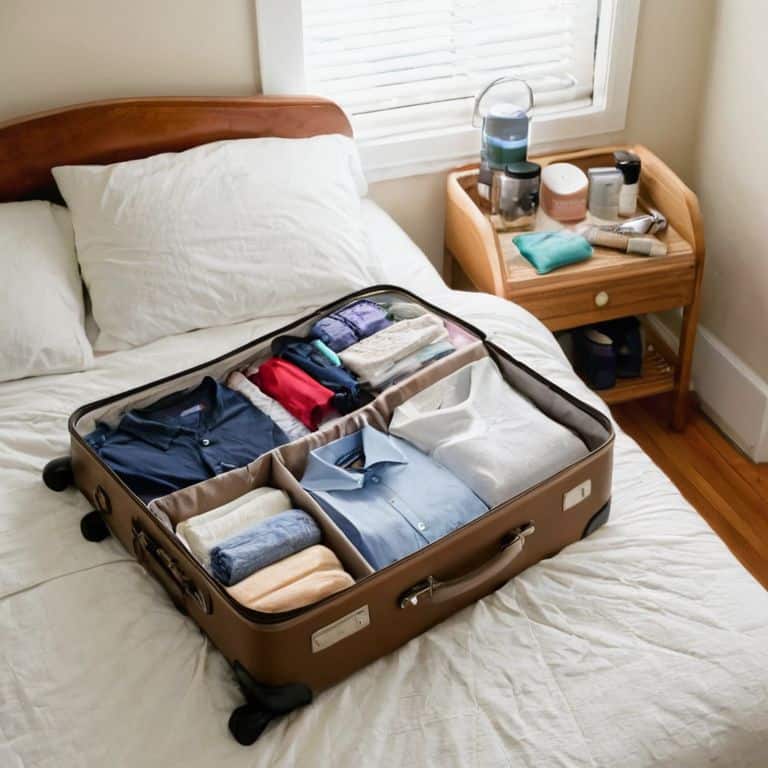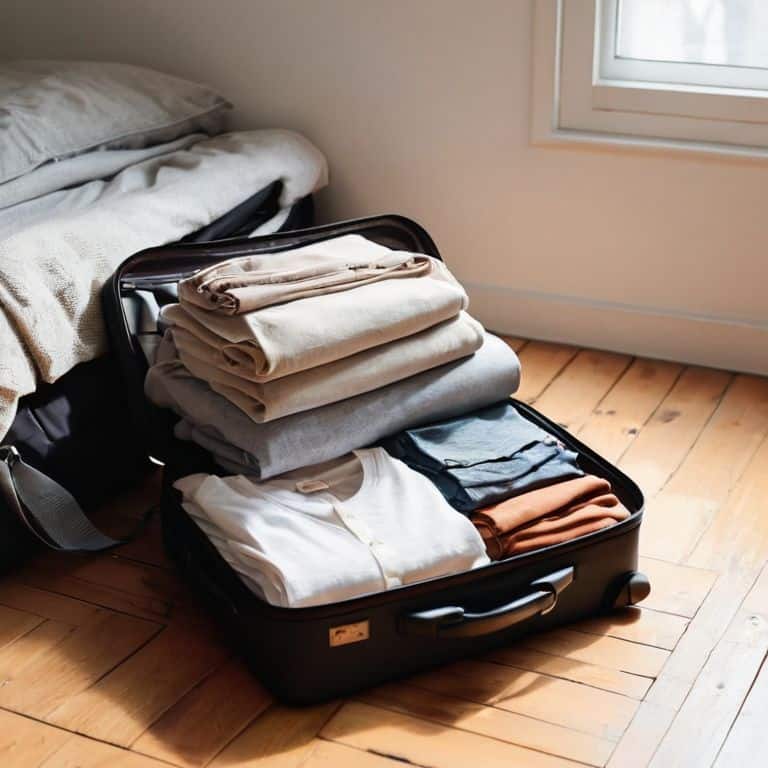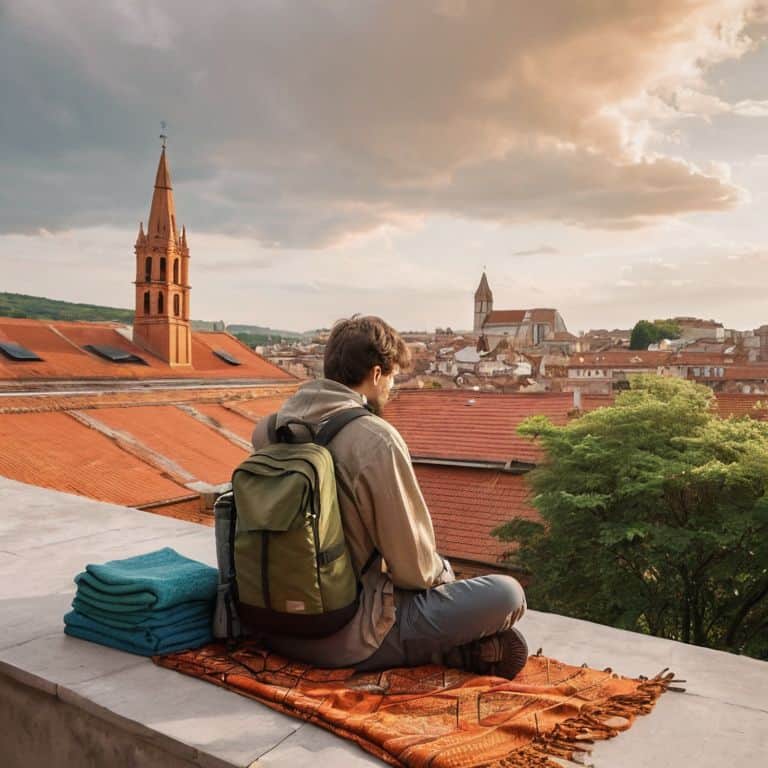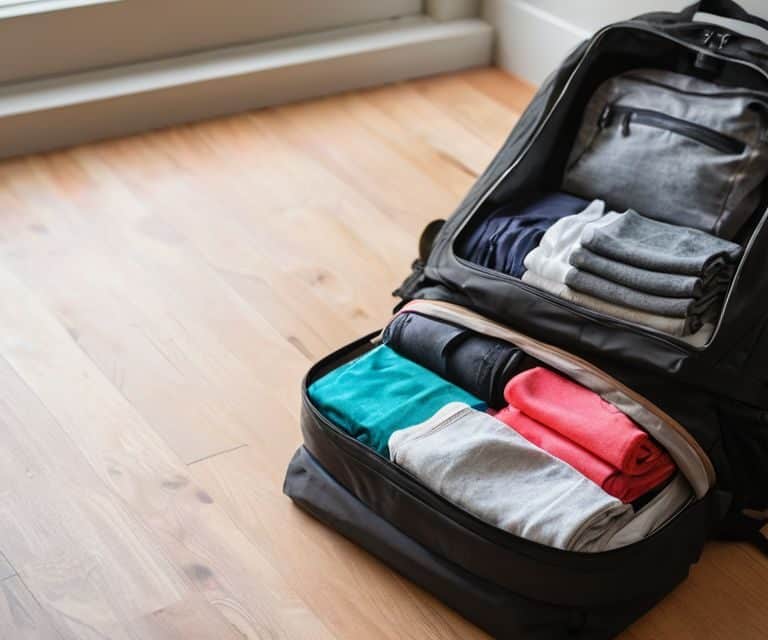I still remember the first time I embarked on a long-term travel journey, cluttered with a massive suitcase and a naive mindset. The idea of packing for long-term travel seemed daunting, and I thought I needed to bring my entire life with me. But, as I soon discovered, that’s a myth – you don’t need to pack everything and the kitchen sink. In fact, the less you pack, the more freedom you’ll have to roam and immerse yourself in the local culture. I’ve learned that less is more when it comes to packing, and it’s a lesson that has stuck with me throughout my travels.
As someone who’s been on the road for years, I’ve picked up a thing or two about what works and what doesn’t when it comes to packing for long-term travel. In this article, I’ll share my honest, no-hype advice on how to pack like a digital nomad, from ditching the fancy luggage to mastering the art of one-bag travel. I’ll give you the lowdown on the essentials you need to bring, and more importantly, what you can leave behind. My goal is to help you avoid the common pitfalls of overpacking and make the most of your travel experience, so you can focus on what really matters – immersing yourself in new cultures and making unforgettable memories.
Table of Contents
Guide Overview: What You'll Need

Total Time: 2 hours 30 minutes
Estimated Cost: $50 – $100
Difficulty Level: Intermediate
Tools Required
- Luggage Scale (for weighing bags)
- Packing Cubes (for organizing clothes)
- Travel Wallet (for keeping documents safe)
Supplies & Materials
- Sturdy Luggage (with multiple compartments)
- Packing Paper (for wrapping fragile items)
- Travel-Sized Toiletries (to save space)
- Power Bank (for charging devices on the go)
- Travel Adapter (for foreign outlets)
Step-by-Step Instructions
- 1. First, ditch the fancy luggage and opt for a sturdy, versatile backpack that can withstand the rigors of long-term travel. I’ve found that a good backpack can make all the difference in keeping your gear organized and easily accessible. When choosing a backpack, consider the size, material, and number of compartments to ensure it meets your needs.
- 2. Next, make a packing list to help you stay organized and focused. Start by categorizing your belongings into essentials, such as clothing, toiletries, and electronics, and then prioritize the items you need to bring. Be ruthless – if you don’t need it, leave it behind. Remember, the key to packing light is to pack only what you need.
- 3. When it comes to clothing, less is more. Choose items that are versatile, comfortable, and can be easily mixed and matched. Consider packing clothes that can be dressed up or down, and opt for quick-drying, moisture-wicking fabrics that can withstand the demands of travel. Don’t forget to include a few essential accessories, such as a scarf or hat, to add a pop of color and personality to your outfits.
- 4. Toiletries can be a challenge when packing for long-term travel, but the key is to keep it simple. Opt for multi-use products, such as a shampoo that doubles as body wash, and consider decanting your favorite products into smaller containers to save space. Don’t forget to include any personal care items that are essential to your daily routine, such as contact lenses or medication.
- 5. Electronics are a must-have for any digital nomad, but they can also be a significant addition to your pack. Streamline your tech by choosing devices that serve multiple purposes, such as a smartphone that can also function as a camera and GPS. Consider investing in a portable power bank to keep your devices charged on the go, and don’t forget to pack essential cables and adapters.
- 6. Once you’ve packed your essentials, it’s time to think about organizational systems. Consider using packing cubes or compression bags to keep your gear organized and compress your pack to make the most of your space. You can also use smaller bags or pouches to store items like socks and underwear, making them easier to find when you need them.
- 7. Finally, check and double-check your pack before you leave to ensure you have everything you need. Make a mental note of the items you’re likely to need immediate access to, such as your passport and phone charger, and pack them in an easily accessible place. By following these steps and being mindful of your packing choices, you can create a system that works for you and makes your long-term travel experience less stressful and more enjoyable.
Packing for Long Term Travel

When it comes to ultralight travel gear, I’ve learned that less is often more. Ditching the fancy luggage and embracing a minimalist mindset has been a game-changer for me. I’ve found that investing in a few versatile, high-quality pieces of clothing can make a huge difference in the long run. For example, a good pair of lightweight pants can be dressed up or down and worn multiple times without needing to be washed.
As I’ve navigated packing strategies for small spaces, I’ve developed a few trusted techniques. One of my favorites is to use electronic organization for travel to keep my cords and chargers tidy. It’s amazing how much of a difference it can make to have a system in place for keeping track of your devices and adapters. I also swear by a good international travel adapter, which can be a lifesaver when you’re on the go.
In terms of personal item packing lists, I’ve found that it’s all about striking a balance between preparedness and flexibility. I like to keep a small stash of essentials, such as a portable charger and a spare set of clothes, tucked away in my bag. This way, I can focus on enjoying the journey without worrying about the logistics. By keeping my gear organized and my priorities straight, I’ve been able to stay focused on the things that really matter – like finding the best street food and getting lost in new cities.
Essential Travel Clothing Hacks
When it comes to travel clothing, I’m all about versatility and practicality. I swear by packing a few essential, multi-use items like a lightweight scarf that can double as a blanket or a dressy accessory. I also prioritize quick-drying, moisture-wicking fabrics that can withstand the rigors of frequent washing and wearing. And let’s not forget about layers – a good rule of thumb is to pack clothes that can be easily mixed and matched to create multiple outfits.
I’ve also learned to embrace the art of hand-washing and line-drying my clothes, which not only saves space in my luggage but also reduces my environmental footprint. By choosing clothes with built-in UPF protection and moisture-wicking properties, I can stay comfortable and protected from the elements, whether I’m hiking through the jungle or exploring a bustling city.
Ultralight Gear for Small Spaces
When it comes to ultralight gear for small spaces, I swear by my trusty portable stove and compact cooking pot. They’ve been lifesavers in tiny hostel kitchens. I also recommend investing in a lightweight, quick-dry towel and a packing cube system to keep your belongings organized. Don’t even get me started on the joys of a good backpack – look for one with multiple compartments and pockets to keep your essentials within easy reach.
I’ve learned to prioritize multifunctional items, like a sarong that can double as a blanket or towel. And let’s not forget the power of a good packing list – write it down, check it twice, and you’ll be amazed at how much stress you can avoid when arriving in a new place.
Packing Hacks from a Seasoned Nomad
- Ditch the fancy luggage and invest in a sturdy, versatile backpack that can fit in overhead compartments
- Master the art of layering: pack clothes that can be mixed-and-matched to create multiple outfits for different weather conditions
- Roll your clothes to save space and reduce wrinkles – it’s a game-changer for packing light
- Choose multi-purpose gear, like a sarong that can double as a blanket or towel, to minimize clutter and maximize functionality
- Leave some extra space in your luggage for souvenirs and unexpected purchases – you never know what local treasures you’ll discover along the way
Key Takeaways for the Digital Nomad
Ditch the fancy luggage and invest in ultralight gear to maximize mobility and minimize stress
Mastering the art of travel clothing hacks, such as quick-drying fabrics and multi-purpose items, is crucial for a clutter-free and efficient wardrobe
Embracing a ‘less is more’ mindset and prioritizing local immersion over tourist attractions will lead to a more authentic and fulfilling long-term travel experience
The Freedom of Less
Packing for long-term travel isn’t about filling a suitcase, it’s about editing your life down to the essentials – and that’s where the real adventure begins.
Clara Bishop
Embracing the Art of Minimalist Travel

As I’ve shared my own experiences and tips on packing for long-term travel, I hope you’ve come to realize that it’s all about finding a balance between being prepared and embracing the unknown. From choosing the right ultralight gear to mastering the art of travel clothing hacks, it’s the little things that make all the difference. By ditching the guidebook and taking a more immersive approach to travel, you’ll not only save space in your luggage but also open yourself up to a more authentic experience. Remember, it’s not about checking off a list of tourist attractions, but about living in the moment and soaking up the local culture.
As you set off on your own journey, I want to leave you with a final thought: the art of travel is not just about the destination, but about the person you become along the way. By embracing the challenges and uncertainties of long-term travel, you’ll discover a sense of resilience and resourcefulness that will stay with you long after you return home. So, take a deep breath, grab your backpack, and get ready to embark on the adventure of a lifetime – one that will leave you feeling more alive, more connected, and more at peace with the world around you.
Frequently Asked Questions
How do I pack efficiently for different climates and activities without overloading my luggage?
For me, it’s all about layers and versatility – I pack clothes that can be easily mixed-and-matched across climates and activities. Think quick-drying tops, lightweight pants, and a good waterproof jacket. I also swear by packing cubes to keep my gear organized and compress my luggage to avoid overloading.
What are some essential items that I should always carry with me as a digital nomad, and how can I ensure I don't forget them?
Honestly, I swear by a portable power bank, a universal adapter, and a compact first-aid kit. I also keep a mini-toolkit with a pocket knife, duct tape, and a tiny flashlight. To avoid forgetting them, I’ve created a pre-trip checklist that I review religiously before each departure – it’s saved my bacon more times than I can count!
Are there any specific packing strategies or tools that can help me organize my belongings and make the most of small spaces in hostels or apartments?
I swear by packing cubes and a portable storage bin for keeping my gear tidy in tight hostel quarters. It’s all about maximizing vertical space and labeling everything, so you can find what you need in a flash. Trust me, it’s a total game-changer for digital nomads like us.
